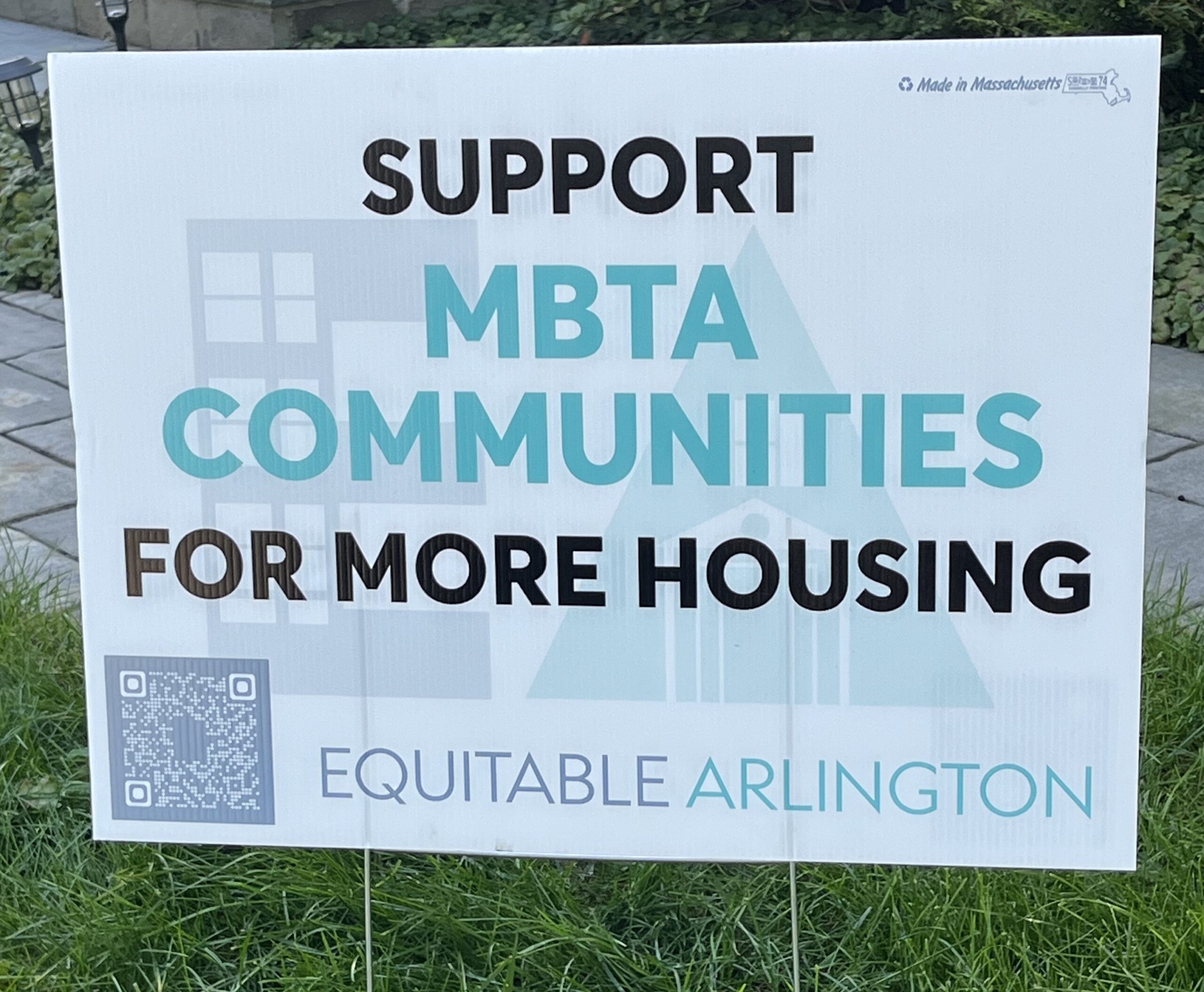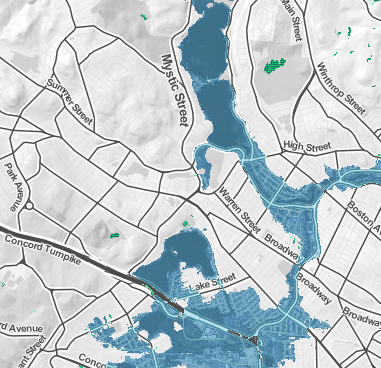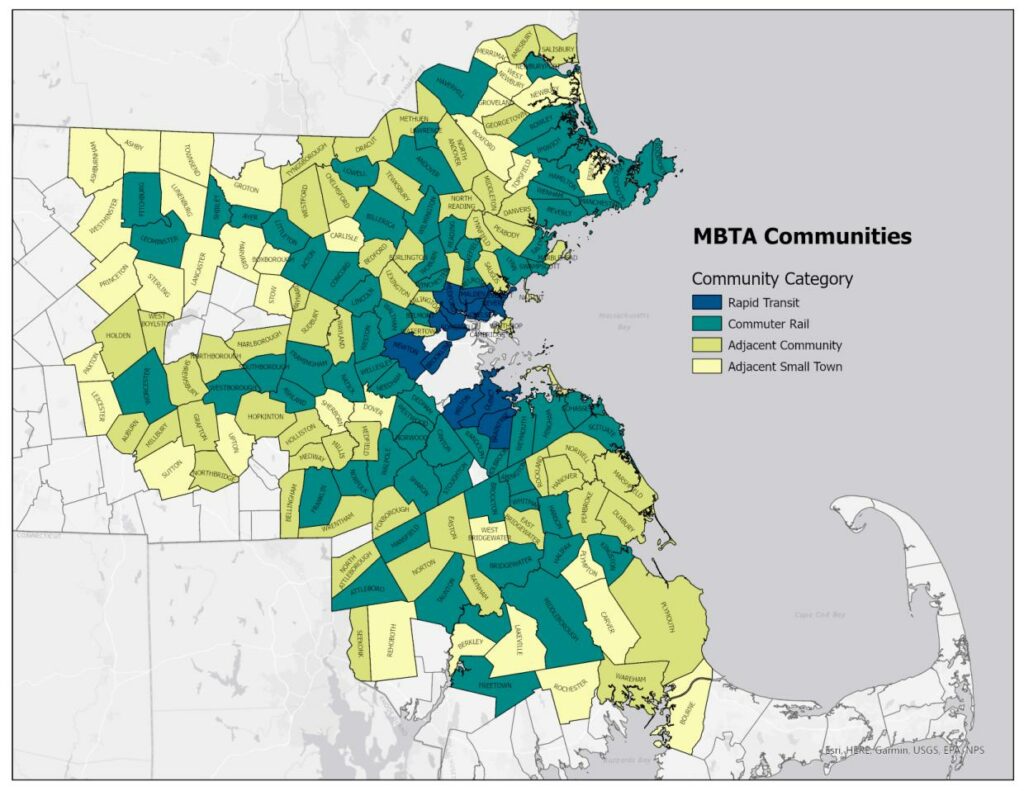by Arthur Prokosch
While acknowledging the progress that municipalities like Arlington have made, a recent Boston Globe article makes two major critiques of the effectiveness of the MBTA Communities law. The zoning that Arlington Town Meeting passed last Fall and confirmed this Spring holds up well to both critiques. At the same time, it’s clear that more needs to be done in Arlington and statewide to ensure housing access for all.
The article’s first critique is that a town’s zoning can satisfy state requirements even if it’s likely to result in few if any new homes being constructed. Towns like Norwood are placing their new zones right on top of major apartment buildings that already exist, making it unlikely that existing buildings will receive major rehabs to add just a few units. Or, towns can add enough other restrictions, even if well-meaning, to their zoning that developers won’t take the risk of trying to fit new units in.
In Arlington, it is true that existing 2-story and higher buildings impede construction of new units within the new MBTA Communities zone along Massachusetts Ave and Broadway. On the other hand, our new zoning allows enough new capacity—up to 6 stories total for projects that include bonuses like ground-floor commercial—that new homes will be built over time. Additionally, unlike some towns, we can be confident that restrictions do not make our zoning financially infeasible to construct. The state approved our affordability requirements only after concluding that our zoning is in fact feasible to construct with all restrictions.
The second critique is that MBTA Communities will result in far fewer new homes statewide than the “sticker price” of 300,000. This is true, up to a point, but is not a surprise. That number refers to “capacity,” which ignores the homes that are already there. The difference between “capacity” and actual units built is why the Arlington MBTA Communities Working Group and Equitable Arlington advanced plans that meaningfully exceeded Arlington’s mandated capacity of 2,046. Arlington took the meaningful step of passing zoning that is calculated at a “capacity” of 3,200, which is better but will certainly not result in the 2,046 new units it would take for 300,000 new homes to be constructed statewide.
So, where does that leave us? While some cities and towns are passing MBTA Communities zoning with restrictions that mean that new units are unlikely to be built, other municipalities like Arlington are using this opportunity to pass meaningful zoning. For example, Lexington went beyond the state’s requirements, especially in allowing dense development in areas near Route 95/128. Developers are already applying for permits there, suggesting that Lexington could have a fair amount of new housing sooner than most communities.
Regardless, it is clear that our work is not yet done. As Luc Schuster of the Boston Foundation put it in the closing quote of the Globe article, “MBTA Communities is a good law, and it is certainly better than nothing… [and] We have to start talking about what we can do next.”





